The answer is both. Odessa or Organisation der ehemaligen SS−Angehörigen (Organization of Former SS Members) was the code word used by the American Counterintelligence Corps (CIC) to describe an umbrella operation to aid former Nazis in their escape to South America. You’re probably familiar with the fictional Odessa from having read Frederick Forsyth’s 1972 book, The Odessa File, or more likely, having seen the 1974 movie by the same name (starring Jon Voight). Forsyth portrayed Odessa as a secret organization run strictly by and for former Nazi SS men escaping certain retribution by the Allied governments at the end of World War II. Forsyth wrote that Odessa was responsible for the formal escape route out of Europe and into South America where the fanatical former Nazis would try and establish a Fourth Reich. Watch the movie trailer here.
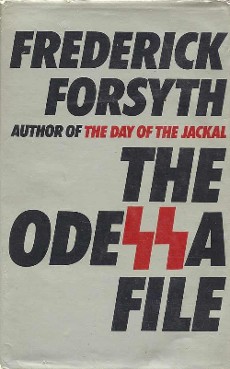
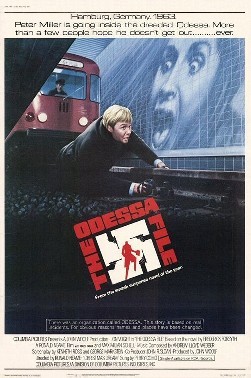
In reality, the organization of the Nazi and other war criminal’s escape routes entailed a much broader web of networks. As the Argentine author, Uki Goñi, put it, “layered rings” of non-Nazi entities sympathetic to Hitler and the Nazi regime were primarily responsible for the organization, implementation, and execution of moving its human cargo across the Atlantic. It wasn’t the singular, secretive, and Nazi SS-organized group as Forsyth portrayed in his book. Goñi’s exhaustive research (a lot of it due to declassified documents) found these “rings” to consist of four primary groups: the Vatican/Catholic Church, Allied intelligence agencies, Swiss authorities, and secret Argentine organizations supported by Juan Perón and his government. Beneficiaries of these escape routes included not only former SS men but war criminals from France (including Vichyites), Croatia, Slovakia, and Belgium. High ranking members of the Ustaše (Croatian) and Rexist (Belgium) fascist parties successfully used these routes to evade capture and certain death.
This is a story too large for one blog. I can only stimulate your appetite to read more about Odessa and the details of more than 10,000 of the most notorious and brutal Axis war criminals escaping to South America between 1945 and 1950.
Did You Know?
When I was a commercial banker in the mid-1980s, I took on a client that was a mid-size medical practice. The three partners were women born in Argentina in 1946. They emigrated to the United States after medical school but although married, they used their maiden names for professional reasons, a German surname. You can connect the dots.
Argentina
One thing all of the escape routes had in common was that “all roads led” to Argentina. Although a neutral country during World War II, the Argentine government was sympathetic to Hitler and collaborated to a great extent with the highest echelon of Nazi officials, including Hitler, Himmler, Göring, and von Ribbentrop. Mutual friendships, business relationships, and webs of contacts were established during the 1930s and only grew stronger throughout the war years. The primary relationship was built by Argentine agents with Himmler’s SS. The Nazis considered Argentina to be “the last German bridgehead in the Western Hemisphere.”
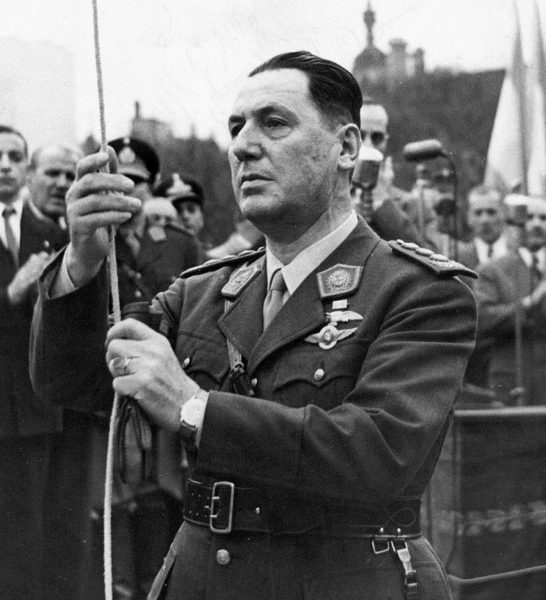
The future president of Argentina, Juan Perón (1895−1974), trained in Mussolini’s military. When the military overthrew the government in mid-1943, Perón was appointed to lead the Department of Labor which he built into a formidable political organization (he would subsequently become the country’s vice-president). Perón supported and adopted a formal agreement with Germany for mutual collaboration. His right-hand man, Col. Enrique González, received his military training with the Panzer division known as Hitler’s “Blitzkrieg General.” Argentina was predominately Roman Catholic (the government was secular which irked the Vatican) and the military was extremely right-wing with a fascist philosophy. Until Argentina turned on Hitler several months before the Führer committed suicide, Germany supplied arms and munitions as well as protecting Argentine Jews from deportation to the death camps (despite German insistence, Perón refused to issue entry visas to Jewish Argentine citizens). Learn more here.
Allied intelligence and the U.S. War Department had cracked the codes used between Argentina and Germany. They kept close tabs on the Argentine agents and their written correspondence with Nazi officials. By March 1945, the Allies were successful in getting Perón and the Argentine government to declare war on Germany. Several years later, Perón went on record as saying he did it on purpose so as to distract the United States from his real activities, setting up Nazi escape routes.
By 1955, Perón had been ousted by fanatical Catholic right-wing generals. They gave cabinet posts to former collaborators and agents of the Nazi espionage service known as Ausland−SD (SD)—this SS foreign intelligence network was similar to the Abwehr (which Hitler abolished in February 1944). There were several military regimes after this until Perón returned to power in 1973. He died in office on 1 July 1976. During the 1960s and early 1970s, the military dictatorship, as part of their “Dirty War,” established Nazi-style death camps in Argentina and sought out the assistance of former Nazi SS officers.
The Ratlines
The escape routes into Argentina for the fleeing war criminals were called Ratlines. They were established with the support of the Argentine Immigration Service and the Foreign Office. Leaders of the routes including Pierre Daye and Ludwig Freude, met frequently with Perón and other organizers such as Croatian priests and Swiss authorities. The day-to-day operations and logistics of the routes was managed by Rodolfo Freude (Ludwig’s son) who would ultimately be appointed as Perón’s Intelligence Secretariat. Freude would arrange for the Red Cross to issue false passports while Perón would authorize the entrance visas to Argentina. Sympathetic priests in Europe would hide and then escort the men to their ships. Financial assistance was routed through Switzerland. Learn more about the Ratlines here.
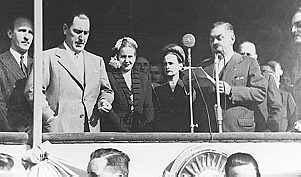
The Ustaše and Others
One of the most brutal Nazi satellite/puppet state governments was the Croatian fascist party known as the Ustaše. Its philosophy was a mixture of fascism, racism, Croatian nationalism, and Roman Catholicism. Prior to World War II, the party was considered a terrorist organization. During the war when it ruled, the Ustaše got worse and even surpassed the Nazis for their brutality. Led by the Poglavnik (Croatian equivalent to “Führer) Ante Pavelić (1889−1959), the Ustaše regime declared a policy of “ethnic cleansing” of all Serbs, Roma, Jews, and other undesirables (including children). By early 1942, the Germans recorded their estimate of 300,000 Croats having been killed by the Ustaše noting “the Ustaše committed their deeds in a bestial manner not only against males of conscript age, but especially against helpless old people, women and children.” The irony is this quote came from a Gestapo report to the SS.
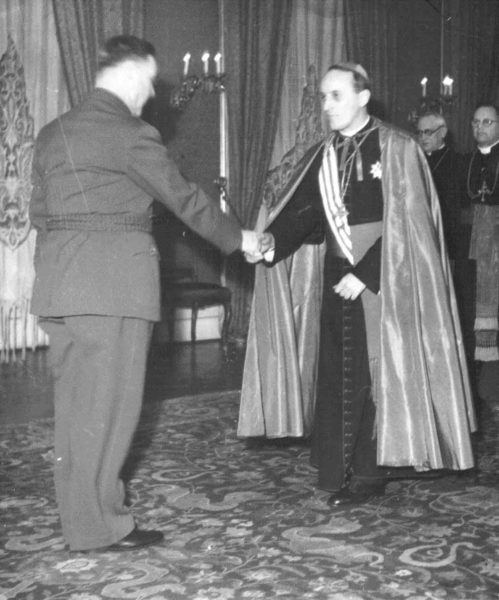
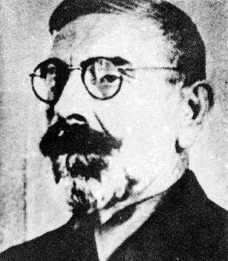
Pavelić fled Croatia in early May 1945. He evaded capture with the help of the Allies and the Catholic Church. By 1948, Pavelić was convinced he would be turned over to the Italians and using the support of the church, he fled to Argentina. Pavelić became Perón’s security advisor in 1950 and eventually, he and almost 34,000 Croatians were given amnesty by Perón. With the blessing of Perón, Pavelić re-established Nazism and the Ustaše party as the official Croatian government-in-exile. However, once Perón fell from office, Pavelić fled to Spain where he died without ever being held accountable for the atrocities committed under his orders.
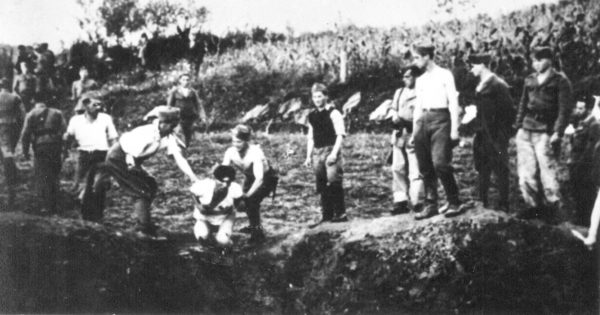
The Rexist party in Belgium was very similar to the Ustaše in so far as its philosophies and collaboration went with the Nazis during the occupation. Although not as brutal as its Croatian counterpart, the party’s leadership admired Hitler for his beliefs and actions. The Rexists were responsible for massacres during the war and some of its most notorious members were executed or imprisoned after the war. However, many former Rexist leaders managed to escape to South America.
Priebke, Schwammberger, Mengele and Eichmann
These former SS officers are probably the “poster children” for the most notorious Nazi war criminals who survived the end of the war and subsequently escaped to Argentina and other countries.
Adolf Eichmann (1906−1962) was the Nazi responsible for the administration and implementation of the Holocaust. Eichmann was also responsible for the establishment of the Jewish ghettos in the major occupied cities. He attended the 20 January 1942 Wannsee Conference where plans for the “Final Solution” were adopted by the Nazis. Captured by the Americans at the end of the war, Eichmann escaped custody and hid in Austria until 1950 when he obtained the necessary documentation and entry permits to emigrate to Argentina. In 1960, the Mossad kidnapped Eichmann in Buenos Aires and put him on trial in Israel. Eichmann was found guilty and hanged.
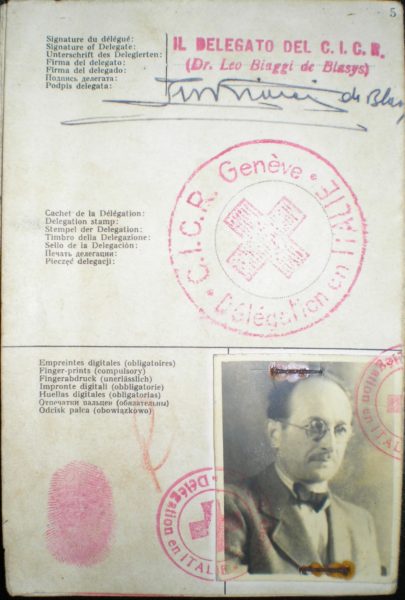
Alois Brunner (1912−c.2010) worked for Eichmann and was directly responsible for sending more than 100,000 people to the extermination camps. He was commander of the Drancy internment camp in Paris and led the round-up of 24,000 Jews in Paris over a two-day period in June 1943. After the war, using false papers, Brunner worked for the U.S. Army and then with a CIA unit covering eastern Europe. In 1954, Brunner fled from West Germany (using a fake Red Cross passport) and after several stops in Italy and Egypt, emigrated to Syria where he was protected by the government. Tried in absentia and found guilty of crimes against humanity, Syria refused to extradite Brunner. He is reported to have died in Syria regretting nothing about his vile past.
Josef Schwammberger (1912−2004) commanded various forced-labor camps in Poland. Captured in Austria, Schwammberger escaped to Argentina in 1948. He lived openly under his own name until 1990 when he was extradited to West Germany for trial. He was found guilty and died in prison.
Erich Priebke (1913−2013) was convicted of war crimes including the Ardeatine massacre in Rome. At the end of the war, Priebke escaped from a British POW camp and hid out until 1948 when he was assisted by a bishop in Rome and used a Vatican passport to enter Argentina (as well as one of Perón’s entry visas). Admitting his role in the massacre to a news unit in 1994 and after many delays, Priebke was finally extradited to Italy where he was tried and acquitted. After an uproar, Priebke was retried. Found guilty in the second trial, Priebke served his 15 years under house arrest. He died in Rome.
Josef Mengele (1911−1979), known as the “Angel of Death,” Mengele worked as one of the camp doctors at Auschwitz. He participated in the “sorting” of Jews and others brought to the camp (click here to read the blog Auschwitz Tatooist). During this process, Mengele was able to pick out victims for his hideous genetic experiments. These included amputations, injecting various diseases, and chloroform injections into the heart. His victims were primarily children. After the war, Mengele worked on a farm near Rosenheim, Germany. His work at Auschwitz was highlighted during the Nuremberg trials and Mengele began to make plans to leave for South America. Assisted through a ratline, Mengele entered Argentina in 1949 using his Red Cross issued passport. The Argentine government eventually issued him a permanent foreign residence permit under his real name which he used to obtain a legitimate West German passport. West Germany was able to obtain extradition approval by 1960 but Mengele was one step ahead of them: he had already fled to Paraguay. Shortly after that, Mengele was on the move again. Aided by former SS friends, he moved to Brazil where he bought into a business and lived until 1976 when he drowned after having a stroke.
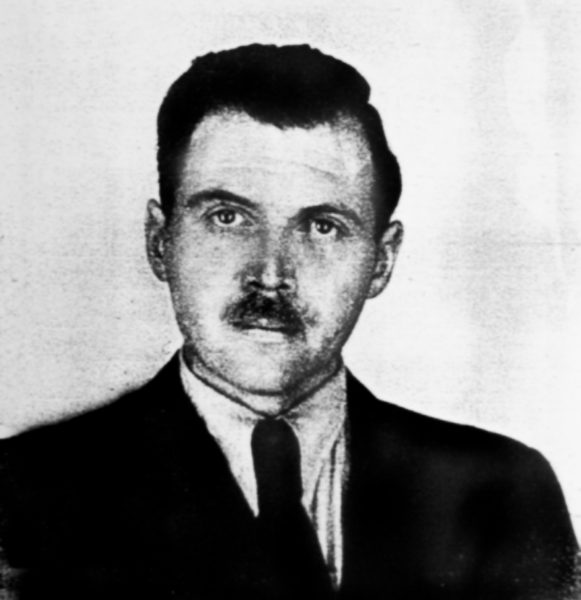
Eduard Roschmann (1908−1977) was the commandant of the Riga ghetto and in charge of forced labor at Auschwitz. Erroneously labeled “the Butcher of Riga,” he nonetheless was responsible for the murder of thousands of individuals. Simon Wiesenthal (a prominent Nazi hunter) convinced Frederick Forsyth to portray Roschmann under his real name in his novel (Maximilian Schell was the actor who portrayed Roschmann in the 1974 movie, The Odessa File). Wiesenthal explained that his motive was to highlight Roschmann’s crimes to the public and flush him out of hiding. Roschmann entered Argentina in 1948 but by 1976, West Germany issued a request for his extradition. The military government sent signals that it would approve the request. Roschmann then fled to Paraguay where he died (although Wiesenthal wasn’t convinced). Again, another case study of a Nazi war criminal who never was brought to justice.
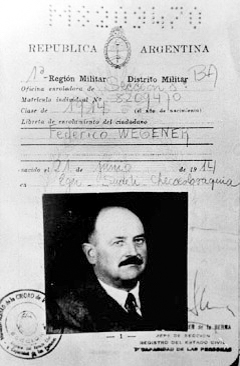
Documented Evidence
During his research, Goñi discovered that the majority of immigration papers of the Nazi war criminals were destroyed in 1955 during the last days of Perón’s government. Although some papers had been saved, much of them were destroyed by the government in 1996. Fortunately, enough documentation had been sent to Belgium for Goñi to confirm the existence of an Odessa-like organization tied to Perón and his government. In the Belgium papers, it became clear that anti-Semitic Swiss officials cooperated with Perón, principally through its secretive banking system. Goñi also obtained documents from London and Washington (under the Freedom of Information Act) which revealed the Vatican was complicit in the protection of war criminals (presumably, the church wanted to influence the secular Argentine government). These papers also documented the trail of stolen gold (from Serbian and Jewish victims) to Argentina during the early 1950s. Watch a documentary on Goñi here.
Postscript
Goñi makes no bones in his book about how his country, government and citizens, turned their backs on facing up to its role in supporting the Nazis during and after the war. He points out similar behavior when it comes to recognizing the human atrocities committed by the military junta during the “Dirty War” between 1974 and 1983. By remaining silent, it allowed them to conveniently re-write history.
I couldn’t help but see a post-war parallel situation in France, a collaborationist country during the war (the Vichy government and collaborating individuals). Despite strong evidence in the late 1960s and early 1970s of its collaborationist role, France didn’t formally acknowledge it role until 1995. Better late than never.
Recommended Reading and Viewing
Forsyth, Frederick. The ODESSA File. London: Hutchinson & Co., 1972.
Goñi, Uki. The Real ODESSA. London: Granta Publications, 2002.
Walters, Guy. Hunting Evil: The Nazi War Criminals Who Escaped and the Quest to Bring Them to Justice. London: Broadway Books, 2010.
Woolf, John (producer). The ODESSA File. Starring Jon Voight. Columbia Pictures and John Woolf Productions, 1974. Based on the 1972 novel by Frederick Forsyth.
Uki Goñi’s book is generally recognized as very well documented and one of the authoritative accounts of Odessa, the Nazi escape routes, and the organizations/people which supported these war criminals in their attempt to evade justice. I think it is a very well written book but unfortunately, the author sometimes doesn’t let us know the outcomes of certain situations. An example is the story of a high-level Jewish banker by the name of Hans Kroch. The Nazis extorted money from him in exchange for his family’s safe passage to Switzerland. Before the money could be transferred, the Gestapo arrested his wife and deported her to the Ravensbrück forced labor camp. There is no mention of her fate.
What’s New With Sandy and Stew
Sandy and I just returned from a cruise on the Holland America Line. I took all four books with us and when no one was looking, I slipped them into the history section of the ship’s library (unlike other HAL ships we’ve sailed on, the ms Eurodam’s library is quite large). I put the books in order of their volume number (numbers one through four) and the next day I noticed they were out of order, a good sign.
Someone Is Commenting On Our Blogs
Thanks to our friend, Bob B., for his kind comments on the two Revolution books. He says, “Stew, I am totally enjoying your books. The format is really interesting and a very informative and an easy read.” That’s exactly what we set out to accomplish.
If there is a topic you’d like to see a blog written about, please don’t hesitate to contact me. I love hearing from you so keep those comments coming.
Why Would You Want To Buy Our “Walks Through History” Books?
Simple.
You like to travel and experience history and historical events. You like to see original buildings that had a significant impact on the people and events of the history you’re engaged with. You want to know the stories behind the brick and mortar in front of you.
The walking tour books are meticulously researched so you can go directly to those sites and learn about the building’s history as well as an introduction to some of the more interesting people associated with it.
Thank You
Sandy and I appreciate you visiting with us. We have some exciting things on the horizon and we’ll keep you updated as we go along.
Share This:
Follow Stew:
Find Stew’s books on Amazon and iBooks.
Please note that we do not and will not take compensation from individuals or companies mentioned or promoted in the blogs.
Walks Through History
Copyright © 2018 Stew Ross



I have read the “Odessa File” and seen the movie – both excellent! I am glad that the Vatican, the Swiss Government, and other entities have been called out for their crimes associated with the Nazis.
Thanks Diane for your comments on our blog, “Odessa: Myth or Truth?” I agree with you comments about the church and others One of the biggest crimes (in my opinion) was how the Allies and the French in particular, commuted the death sentences and prison terms of all the former Nazis convicted of crimes. By 1956, there wasn’t one former Nazi serving time in jail other than the men convicted in the primary Nuremberg trial. Thanks for subscribing to our blogs and I hope you enjoy the future ones.
Nice.. was interested to read this after completing the ODESSA FILE.